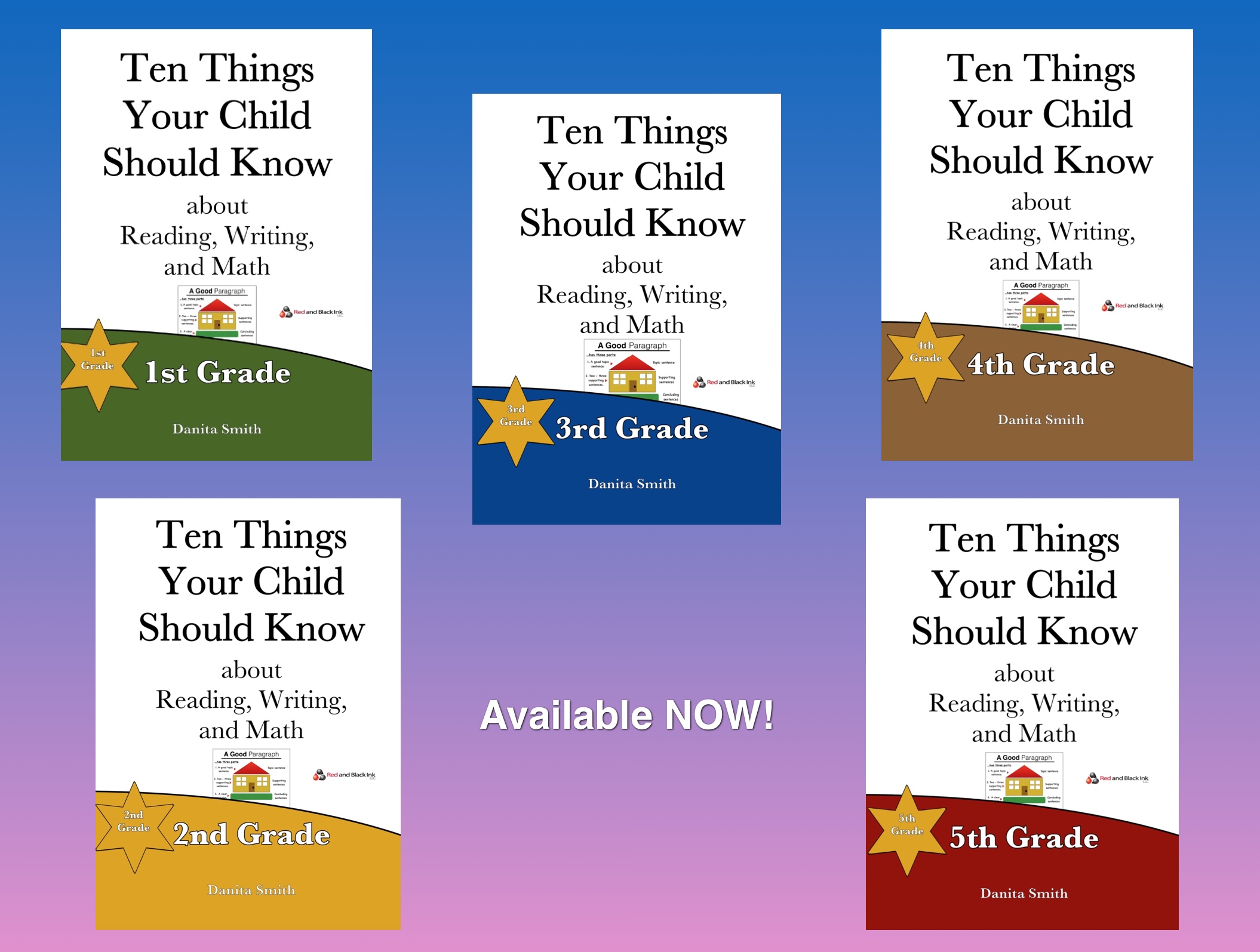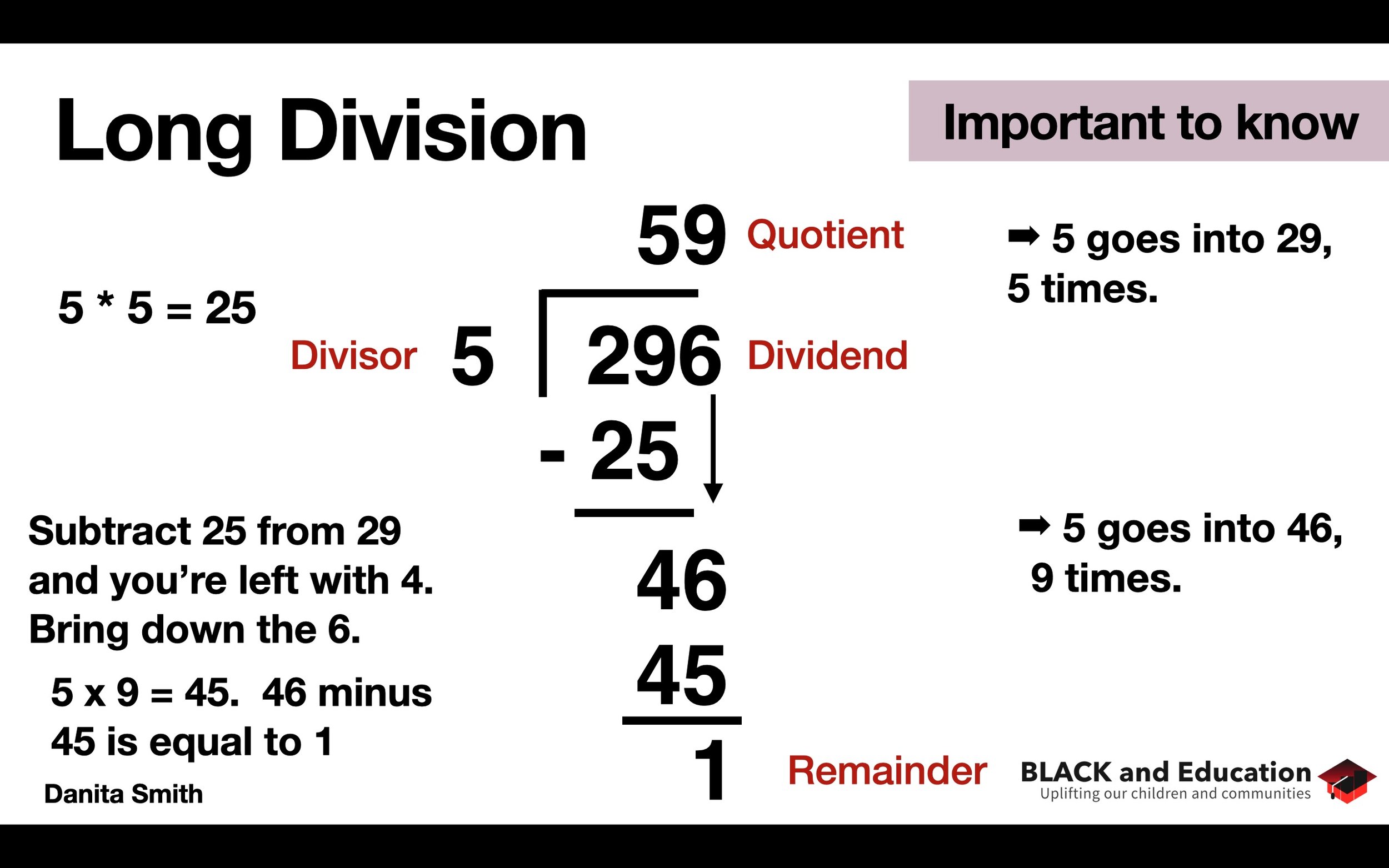Long Division
Available on Amazon
When you are working with ratios, you are really dividing. When you work with fractions, you are dividing. When you find percentages of certain numbers, you are really dividing. You will divide for many reasons in math, so being able to do long division (divide by hand) is a great skill to have. In fact I don’t think you can be as successful as you want to be in math without dividing by hand.
Long division is often the term used when you divide by hand, instead of dividing in your head from memory.
NOTE: The number that is being divided is the dividend. The number that is going into the dividend is the divisor. The answer is the quotient.
Dividend ÷ Divisor = Quotient
Example #1
When you do long division you place the dividend under lines and the divisor outside of the lines. You look to see how many times the divisor can go into the dividend and you take whatever that result is, and subtract it from the dividend to find if there is any remainder.
You can see that the facts you learned in multiplication will be relevant in doing this type of division.
Example #2
In the above, you can easily see that 5 goes into 29, evenly, 5 times with a remainder of 4.
But, what if you have larger numbers?
Example #3
You can go out as far as you need to when doing a division problem. You can stop at a certain point, or stop when you get to a remainder of 0. In the example above 296 ÷ 5 will require us to divide 29 by 5 first, then subtract 25 from 29 to get 4.
Then we will need to bring down the 6, to get 46. We will then divide 46 by 5, which…5 goes into 46, 9 times. That will give us 45 and 45 subtracted from 46 will give us a remainder of one.
So, 296 ÷ 5 = 59, with a remainder of 1
Let’s look at another example.
Example #4
321 ÷ 3 = 107, with a remainder of 0, no remainder. You many have guessed that 3 would go into 321, evenly if you already know some divisibly hacks.
Summary
Being able to do division by hand is a useful skill to have.
You will sometimes have partial quotients where there is a remainder.
Later on, you will learn how to divide numbers using decimals—this allows you to address remainders more specifically.





